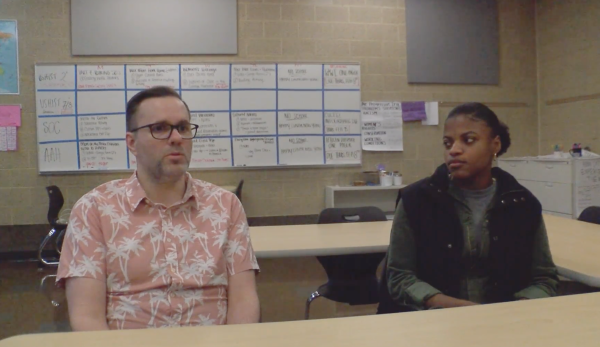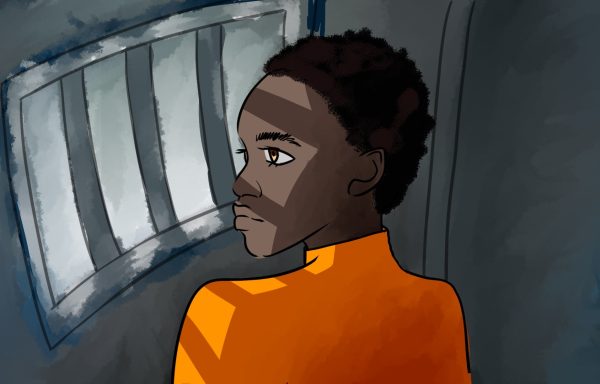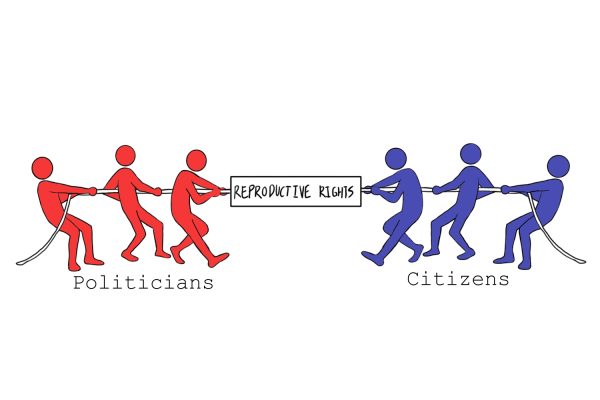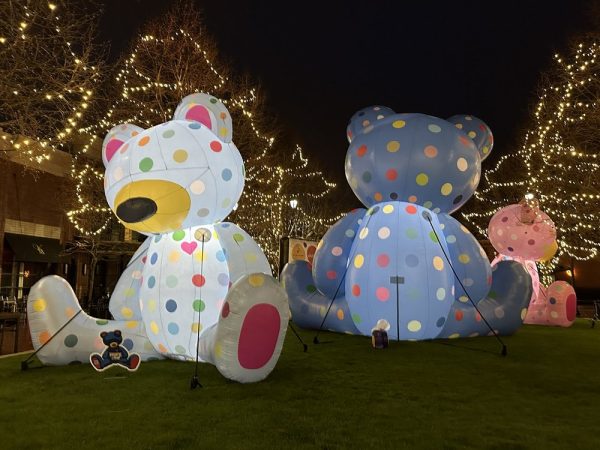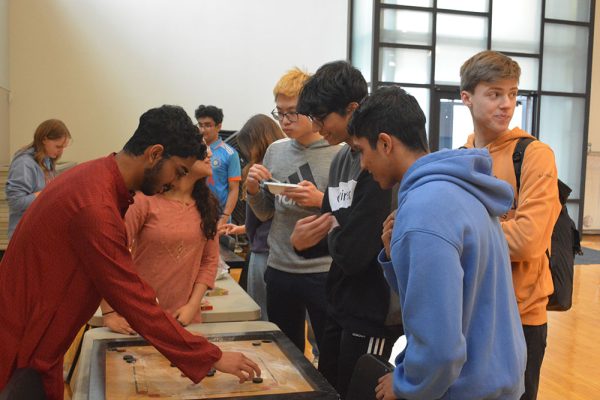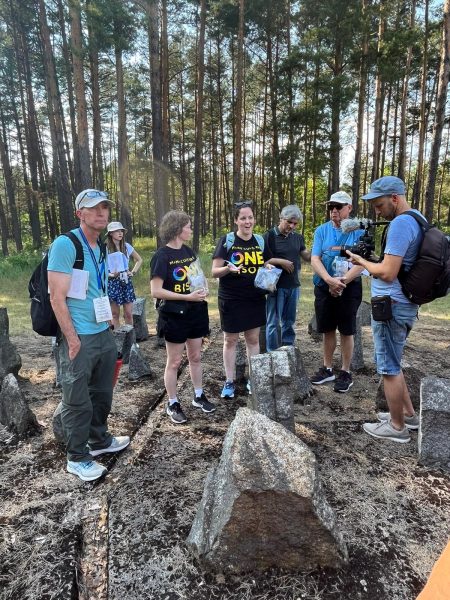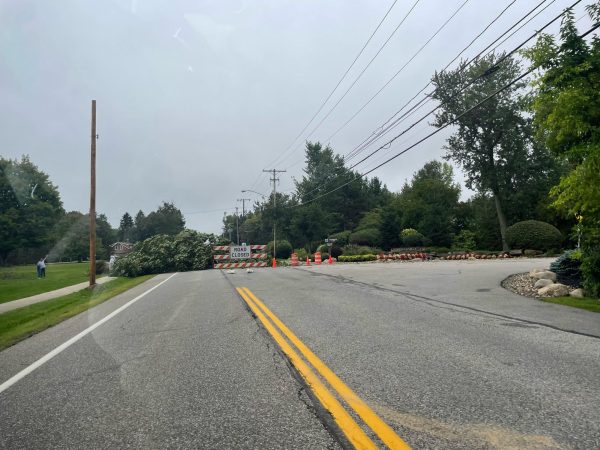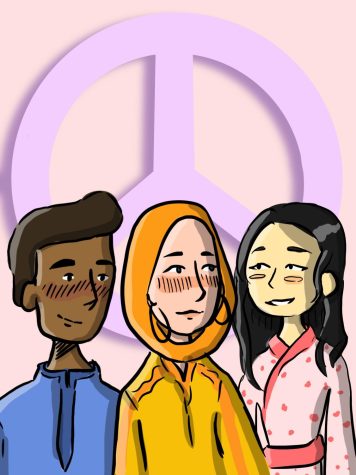Protecting Lives or Protecting Guns?
Debating Regulation in the Age of Mass Shootings
A political cartoon titled “Murder Weapon,” illustrated by the author.
Only 13 hours after the Aug. 3 shooting in El Paso, Texas, a 24-year old opened fire on a crowded street in Dayton, Ohio. Within 32 seconds, 27 were wounded, including 10 now reported dead.
This is one more tragic episode in a long string of mass shootings in recent years. In spite of these many tragedies, gun rights supporters continue to cite the Second Amendment to support their position:
“A well-regulated Militia, being necessary to the security of a free State, the right of the people to keep and bear Arms, shall not be infringed.”
These words were originally adopted by men who were trying to establish independence from what they viewed as Great Britain’s tyrannical rule. The Second Amendment was insurance that the people could retain power against an oppressive government.
However, in light of recent events, perhaps it is time for this generation of Americans to rethink the legitimacy of citing the Second Amendment as a reason for possessing guns.
2019 isn’t even over yet, and according to the Gun Violence Archive, there have been almost forty-thousand incidents of gun violence in the United States, which have caused more than ten-thousand deaths and over twenty-thousand injuries.
Out of these many incidents, only around 300 have been mass shootings, which means that the vast majority of violent incidents involving guns have not even been covered by the media.
Rosetta Craig of the Ohio Coalition Against Gun Violence cited the high rate of U.S. gun ownership as a contributing factor for high rates of gun violence.
We have too many guns with too little accountability for who can sell, buy, possess, store and carry those guns. We are the only developed country that has so many guns in the civilian population… Hundreds of thousands of guns are stolen each year in the U.S., making their way into the criminal population.
— Rosetta Craig of the Ohio Coalition Against Gun Violence
As reported by the latest global Small Arms Survey, there are over 393 million guns in the United States, not including firearms owned by law enforcement agencies or militaries.
“We have too many guns with too little accountability for who can sell, buy, possess, store and carry those guns,” Craig said. “We are the only developed country that has so many guns in the civilian population… Hundreds of thousands of guns are stolen each year in the U.S., making their way into the criminal population.”
Whereas Craig sees these numbers as a problem, Executive Director Dean Rieck of the Buckeye Firearms Association argues that America is, in fact, a safe place. In an email he referenced a Wikipedia article on a list of countries by intentional homicide rate.
“[This list] ranks countries on intentional murder rates,” he wrote. “If you sort the list by the murder rate, the US is somewhere in the middle. Some of the studies… that show the U.S. as a highly violent place [are] questionable. [The U.S.] just isn’t.”
Admittedly, the firearms death rate in the United States (21.3 for Virgin Islands, 10.6 for mainland) cannot compare to that of El Salvador (39.2) or Venezuela (38.7), as calculated by the Institute for Health Metrics and Evaluation in 2016.
However, it is undeniable that rates of gun violence internally are getting higher the more incidents go uncovered and unregulated. For example, on Sept. 6, I checked the Gun Violence Archive to find out that there have been 291 mass shootings since the start of 2019. I checked again on Sept. 16th, and the number rose to 300.
Rieck believes that the cause of the worst gun violence doesn’t have to do with the gun, but the person.
“I think that as a society, we have to stop being afraid to deal with those who show violent tendencies,” Rieck wrote. “We have to start dealing seriously with mental illness and learn how to detect the patterns that lead to incidents like [the mass shootings in Ohio and Texas].”
Most gun rights advocates agree.
“I don’t want people to forget that this is a mental health problem,” President Trump said in response to the Dayton and El Paso shootings. “I don’t want them to forget that, because it is. It’s a mental health problem.”
[This list] ranks countries on intentional murder rates. If you sort the list by the murder rate, the US is somewhere in the middle. Some of the studies… that show the U.S. as a highly violent place [are] questionable. [The U.S.] just isn’t.
— Buckeye Firearms Association Exec. Director Dean Rieck
On the surface, merely calling for better mental health care seems like a good idea for preventing future shootings. Perhaps a neurodivergent person would be more likely to commit an act of violence, but according to MHA (Mental Health America), most people with serious mental illnesses are not violent.
Senior Nikhil Murali agreed that mental health is not the sole issue, but argued that better mental healthcare might lead to less gun violence.
“What I find interesting is that mass shootings have skyrocketed since [the 1980s and 1990s], and Americans have had massive amounts of guns prior to 1980,” he said. “The landmark moment that I see is when President Reagan gutted federal funding for mental health in 1980.”
“Obviously, not every person with mental health problems will go on to commit a mass shooting. But Mother Jones—a left leaning news outlet—found that problems such as paranoia, depression, delusions, etc. were common among mass shooters,” he added.
“We need more, quality mental healthcare, along with strong universal background checks [to avoid future shootings],” Murali said.
Craig agreed that realistic prevention of future mass shootings requires more multifaceted planning.
“The first step is to realize that a multi-dimensional approach is key to reducing the problem of mass shootings and gun violence as a whole,” Craig said. “There are many varied circumstances surrounding each and every shooting. However, every shooting involves a gun.”
More pro-gun activists are still unconvinced, referring to the Second Amendment as the basis for their beliefs.
“We are as ‘absolutist’ as the Founding Fathers and framers of the Constitution. And we’re proud of it,” NRA Chief Executive Wayne LaPierre of the NRA said. “We believe in our right to defend ourselves and our families with semiautomatic firearms technology.”
But “semiautomatic firearms technology” weren’t a part of the Founding Fathers’ thought process when they drafted the Second Amendment.
According to the Washington Post, the average Revolutionary-era musket could only hold a single round at a time and fire three rounds per minute at a velocity of 1000 feet per second. On the other hand, your modern-day AR-15 can hold 30 rounds at a time and fire 45 rounds per minute at a velocity of 3260 feet per second.
However, Rieck defended the right to possess assault rifles. He cited a data table from the FBI, which reported the number of victims murdered by weapons used from 2012 to 2016.
“Handguns are the most often used weapon in murders,” he said. “In 2016, handguns were used in 7,105 murders, while rifles were used in only 374. Yet, when people start talking about banning guns, they invariably want to ban rifles. Why? Knives were used in 1,604 murders. Yet, no one talks about banning knives. Why? Hands and feet were responsible for 656 murders, almost twice as many as with rifles, but of course we don’t talk about banning hands and feet.”
When discussing Rieck’s response, senior Yaya Gao pointed out that while knives and limbs could be harmful, they are, for the most part, used for routines that don’t require violence or murder. In fact, while knives and limbs are utilized for many other purposes, guns are utilized almost exclusively for violence and murder.
Beachwood students may feel that gun violence is a distant problem. After all, Dayton is three hours away.
However, Ohio has seen six mass shootings in recent years, including the 2011 Copley Township shooting, the 2012 Chardon High School shooting, the 2016 Madison High School shooting, the 2016 Pike County shootings, the 2018 Cincinnati shooting and the 2019 Dayton shooting, which had the highest body count.
Beachwood’s very own mall has been the location of gun-related incidents, including a shooting in the parking lot in 2017, another one in 2018, and finally a police-involved shooting just this summer.
But what is the next step in preventing mass shootings like those in Dayton and Texas from happening again? And what should young people who want reasonable gun control do to make a change?
“Learn as much as you can about problems of gun violence,” Craig said. “Get involved in politics and let your voice be heard. Talk to your legislators and tell them what you think. Get involved with an advocacy group to prevent gun violence and consider visiting legislators in Columbus and in district offices. Talk to friends about what you have learned and be a good listener.”
Students shared their views as well.
“I get that you can’t ‘ban’ guns,” said junior Carrington Peavy, “but at least strictly regulating things will be beneficial… making it harder to get a gun and [implementing] routine extensive background checks would save lots of lives.”
Craig stresses the importance of raising awareness about gun issues within local communities.
Ohio has seen six mass shootings in recent years, including the 2011 Copley Township shooting, the 2012 Chardon High School shooting, the 2016 Madison High School shooting, the 2016 Pike County shootings, the 2018 Cincinnati shooting and the 2019 Dayton shooting, which had the highest body count.
“Awareness of the issues surrounding gun violence took a big step forward when students took control of the conversation after the Parkland shooting,” Craig wrote.
Beachwood engaged in that conversation over a year ago. On March 14, 2018, a month after the Parkland shooting, students joined the national walkout to raise awareness for gun violence.
Now, after the deaths of 32 people caused by the back-to-back El Paso and Dayton shootings, I hope students continue to participate in the gun violence prevention movement.
Craig hopes for the same.
“If local schools are going to be a source of credible information about gun violence and its prevention, the students themselves will have to make that happen,” she said.

Amy Chen began working for the Beachcomber in the spring of 2018. In addition to managing site design, she illustrates and covers a variety of topics in...





